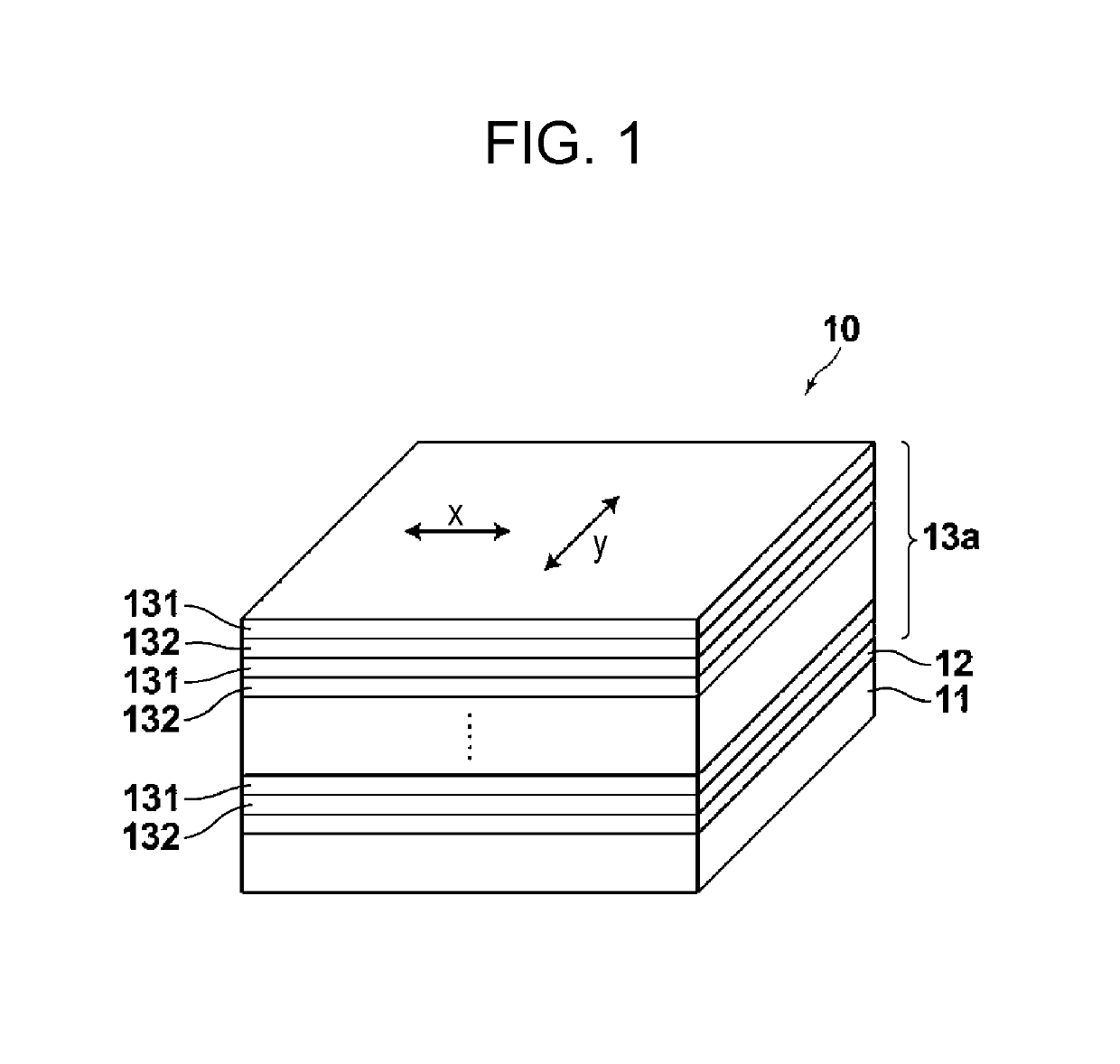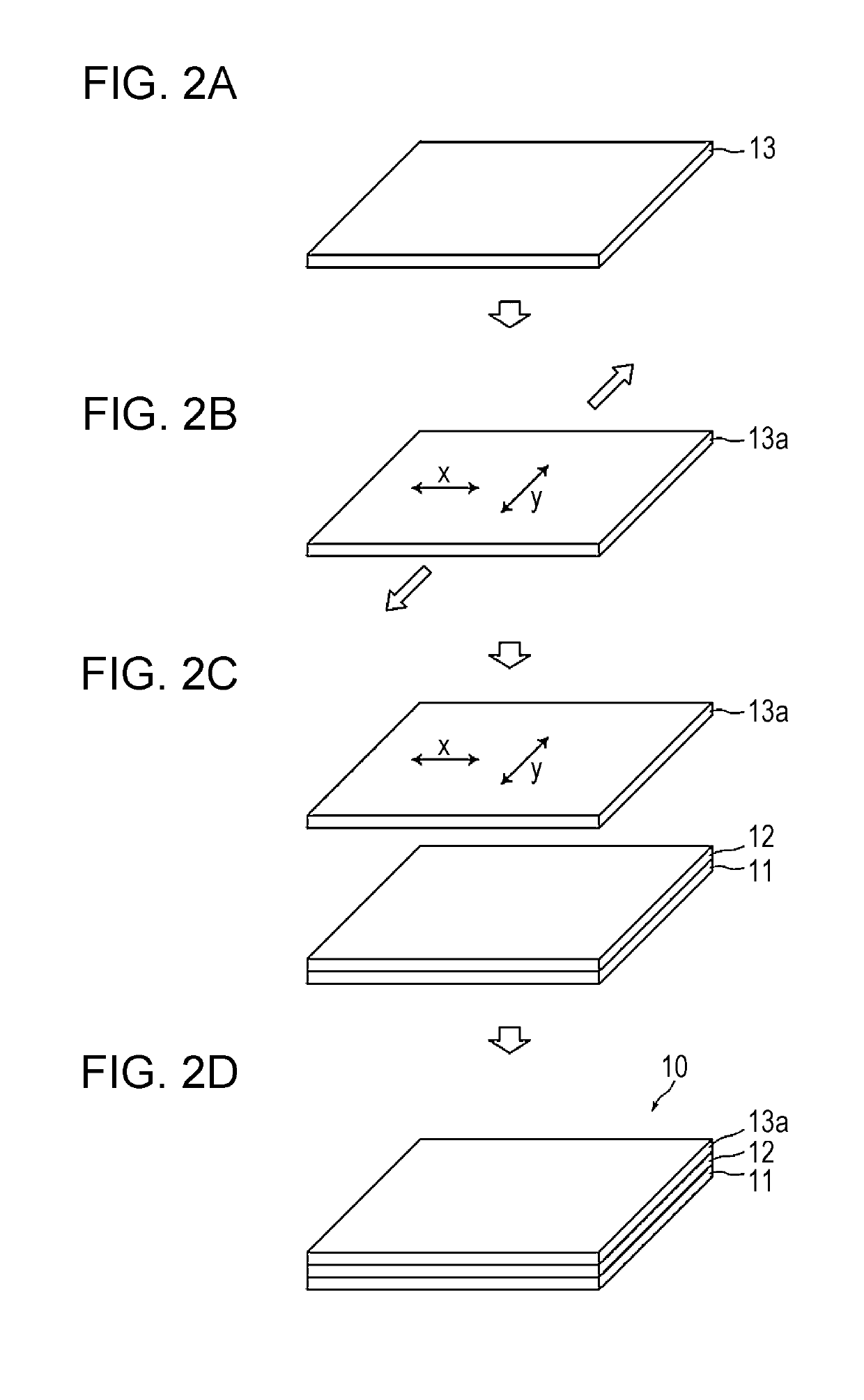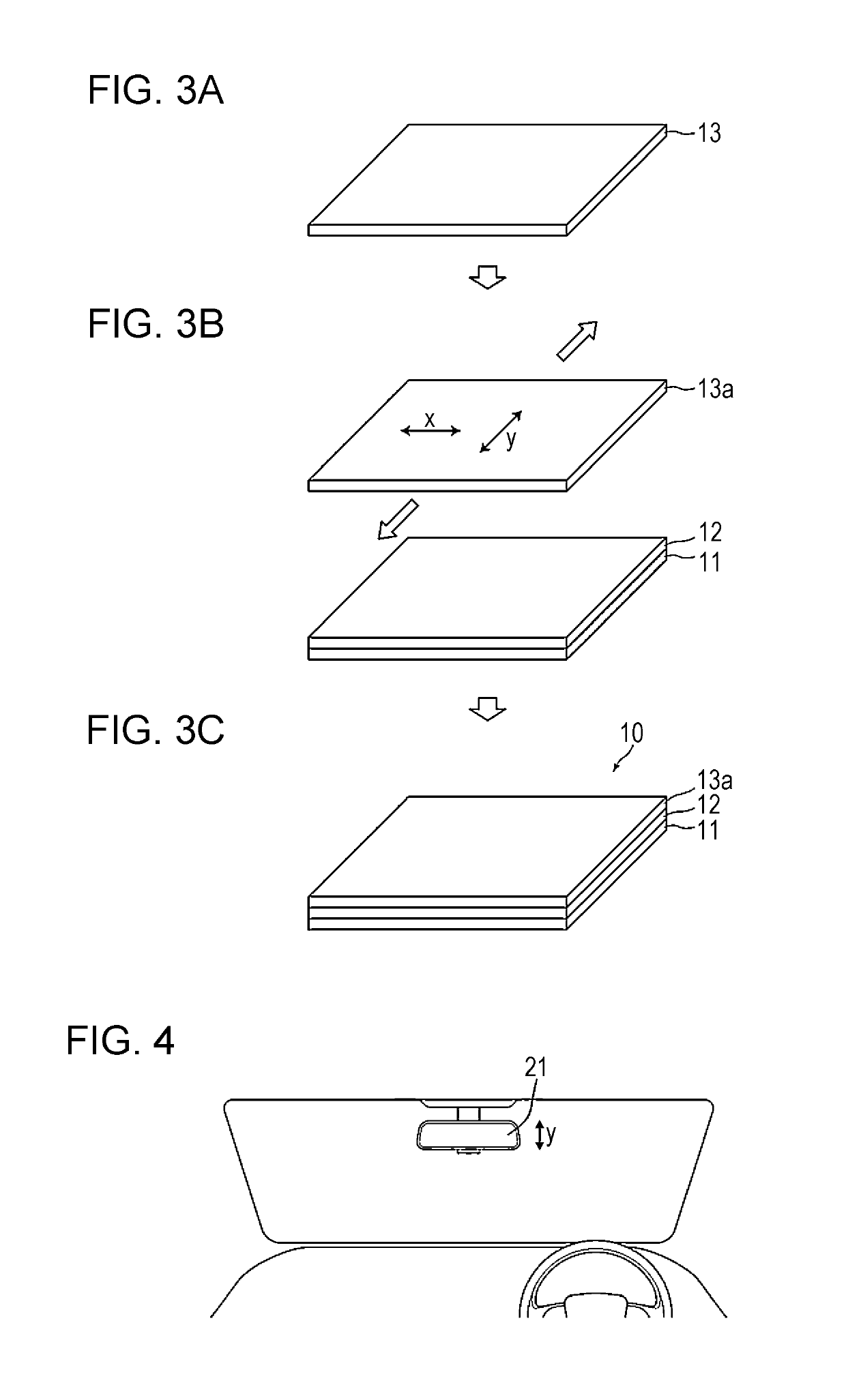Laminated body, method for producing laminated body, and rearview mirror for vehicle
a laminated body and rearview mirror technology, applied in the direction of instruments, polarising elements, other domestic articles, etc., can solve the problems of frequent exposure of multilayer films to high temperature and humidity, and achieve the effect of favorably suppressing the formation of creases
- Summary
- Abstract
- Description
- Claims
- Application Information
AI Technical Summary
Benefits of technology
Problems solved by technology
Method used
Image
Examples
example 1
[0059]A reflective-type polarizing plate (manufactured by 3M Japan Limited) was provided as a multilayer film 13 that transmits first polarized light, reflects second polarized light having a polarization axis which intersects the polarization axis of the first polarized light, and has a structure in which birefringent polymers were stacked. Then, the reflective-type polarizing plate was stretched by 1% (stretch factor: 1%) in a polarization axis direction of first polarized light using a high-performance film stretching machine FITZ (manufactured by ICHIKIN Co., Ltd.) in an atmosphere of 25° C. and 60%. When the reflective-type polarizing plate was further stretched, the polarizing plate was broken at a stretch factor of 3%. This showed that the length of the polarizing plate stretched by 1% corresponded to 98% of the breaking length.
Measurement of Glass Transition Point and Thermal Expansion Coefficient
[0060]The reflective-type polarizing plate stretched by 1% in the polarization ...
example 2
[0065]A reflective-type polarizing plate that was not stretched in Example 1 was cut into a size of 119 mm×100 mm using a slitter. Herein, the polarizing plate was cut so as to have short sides extending in the polarization axis direction of first polarized light. Subsequently, the reflective-type polarizing plate and a quartz glass plate which had a size of 120 mm×70 mm and a thickness of 5 mm and on which an adhesive layer having a thickness of 3 μm was formed were set in an atmospheric pressure bonding machine including a tensile mechanism so as to face each other and then bonded to each other. Herein, both long sides of the reflective-type polarizing plate were fixed using clips attached to the tensile mechanism, and the reflective-type polarizing plate and the quartz glass plate were stretched by 1% at a tension of 100 N in a short-side direction (the polarization axis direction of first polarized light) of the reflective-type polarizing plate while at the same time a bonding p...
example 3
[0066]A laminated body was produced in the same manner as in Example 1, except that the stretch factor of the reflective-type polarizing plate was changed to 1.5%. The thermal expansion coefficient at a temperature 3° C. higher than the glass transition point was −70 [10−6 / K] when the long sides extended in the polarization axis direction of first polarized light. The percentage of the length in the polarization axis direction of first polarized light to the breaking length was 98.5%.
PUM
| Property | Measurement | Unit |
|---|---|---|
| temperature | aaaaa | aaaaa |
| shrinkage | aaaaa | aaaaa |
| glass transition point | aaaaa | aaaaa |
Abstract
Description
Claims
Application Information
 Login to View More
Login to View More - R&D
- Intellectual Property
- Life Sciences
- Materials
- Tech Scout
- Unparalleled Data Quality
- Higher Quality Content
- 60% Fewer Hallucinations
Browse by: Latest US Patents, China's latest patents, Technical Efficacy Thesaurus, Application Domain, Technology Topic, Popular Technical Reports.
© 2025 PatSnap. All rights reserved.Legal|Privacy policy|Modern Slavery Act Transparency Statement|Sitemap|About US| Contact US: help@patsnap.com



